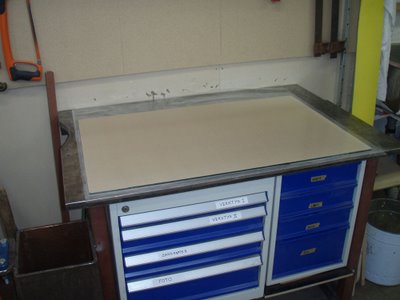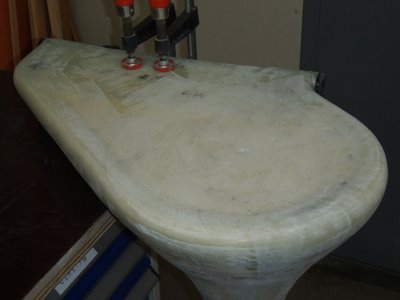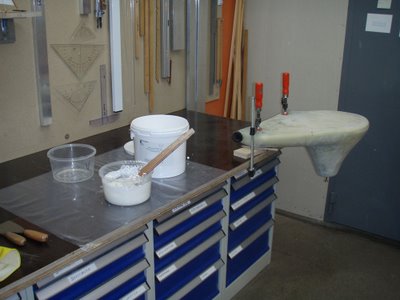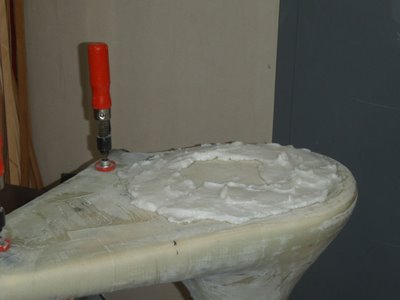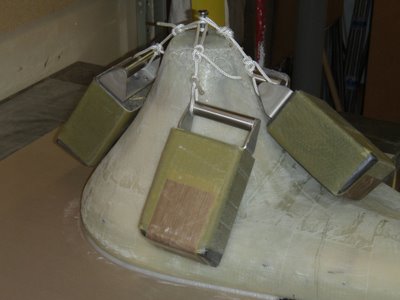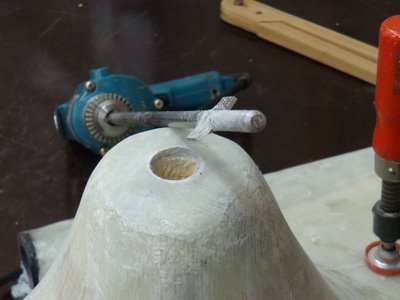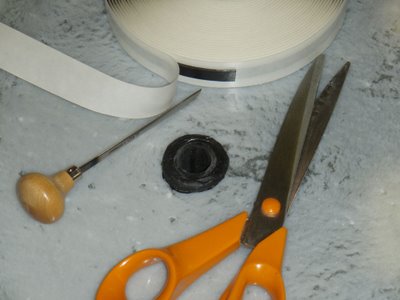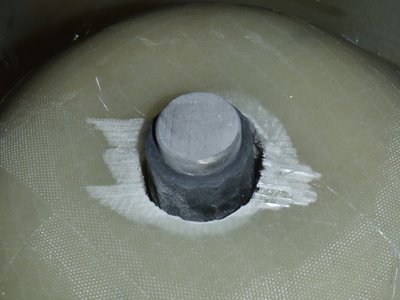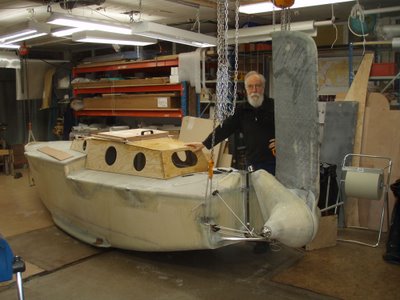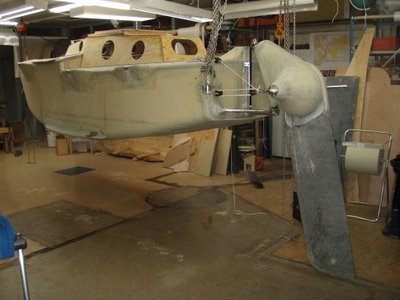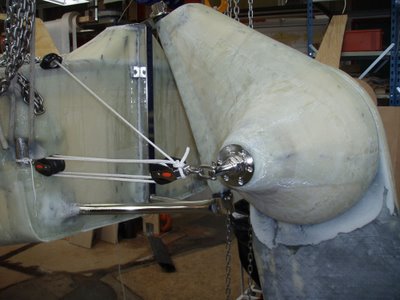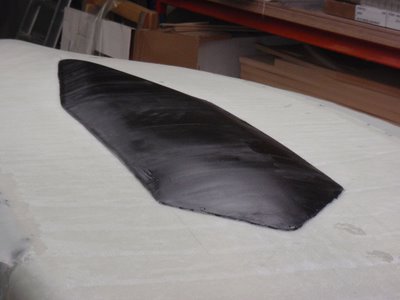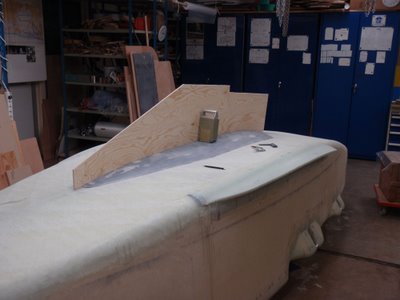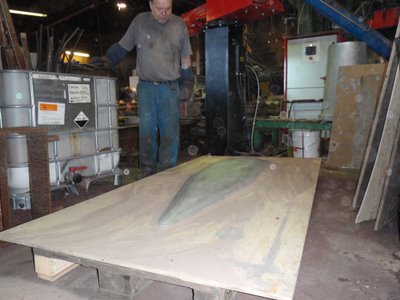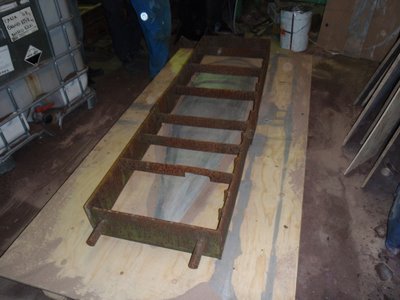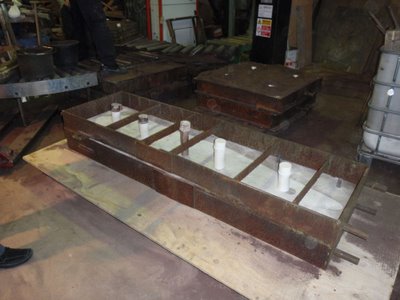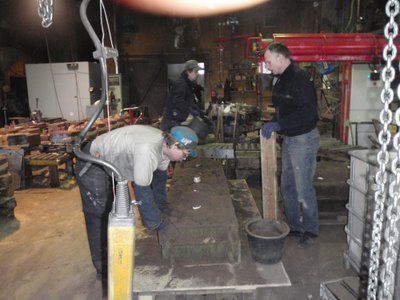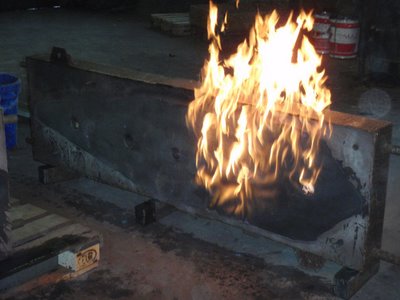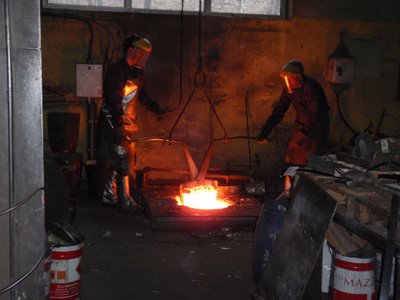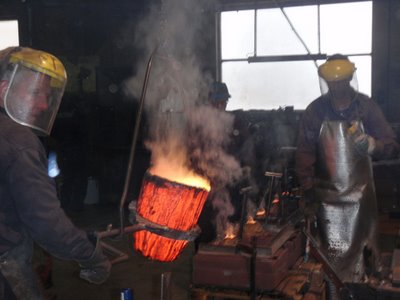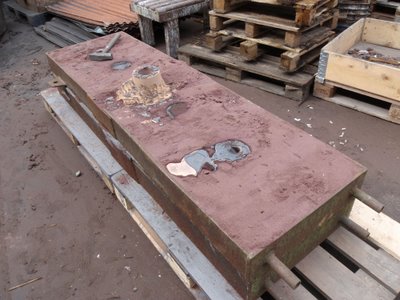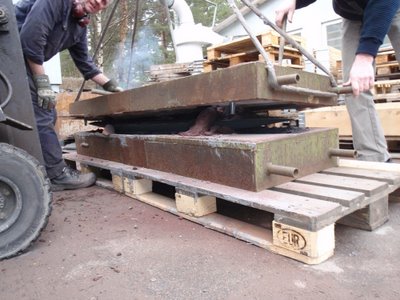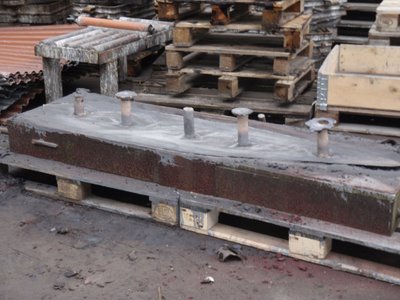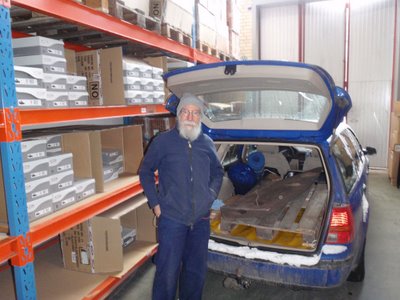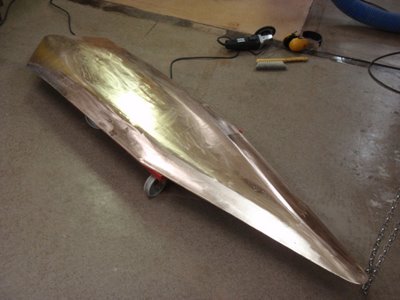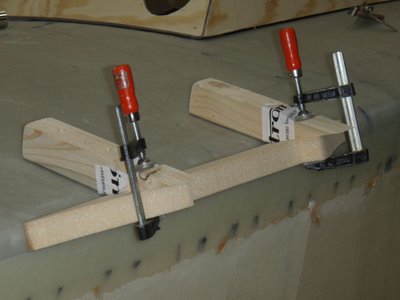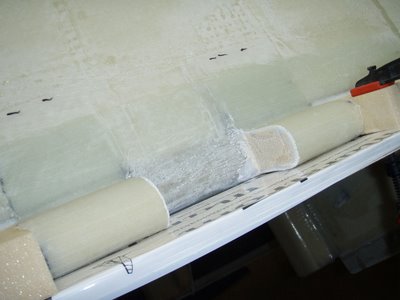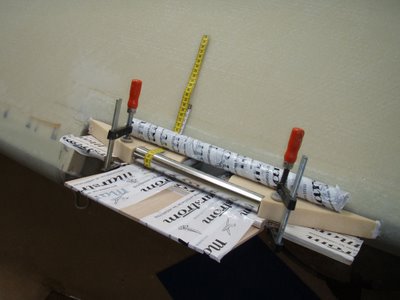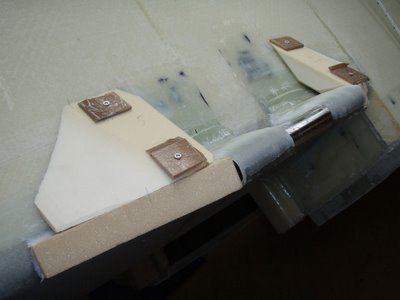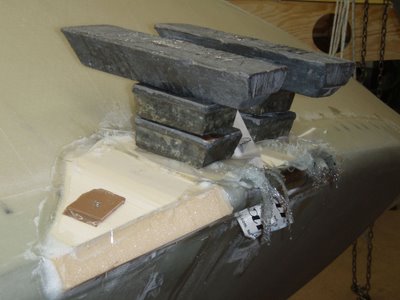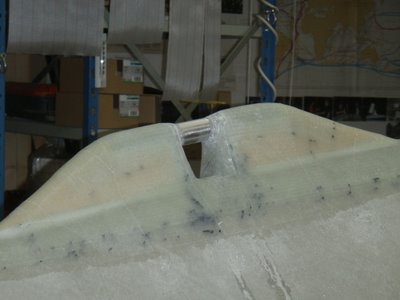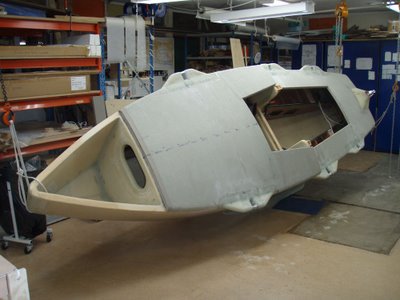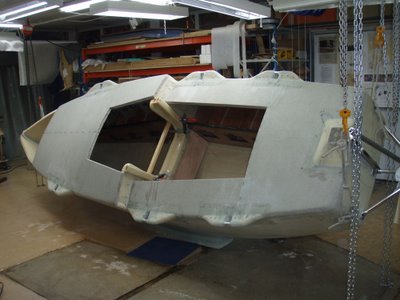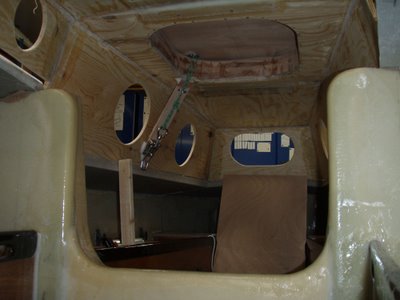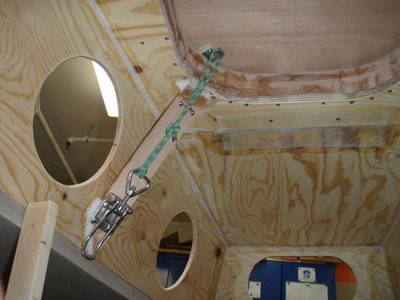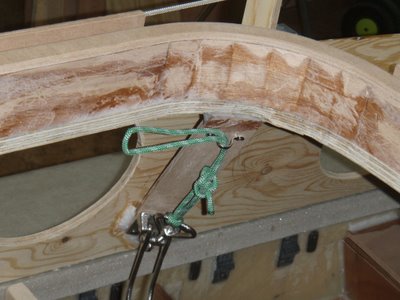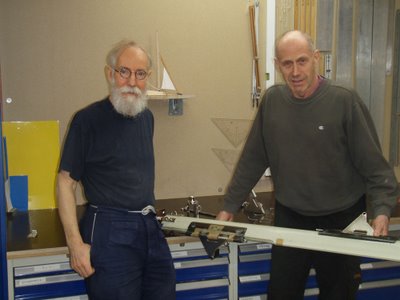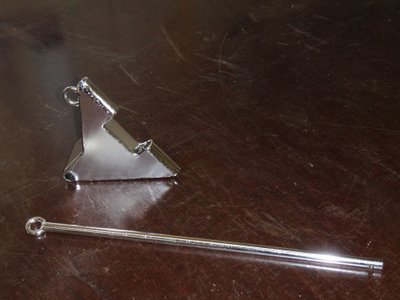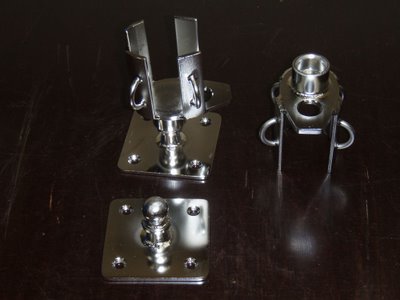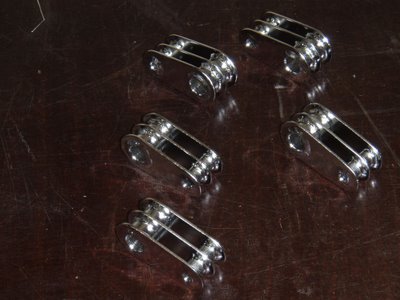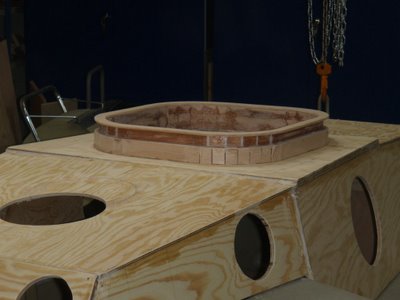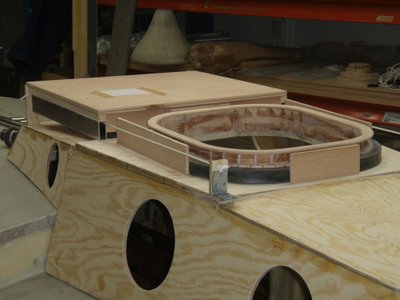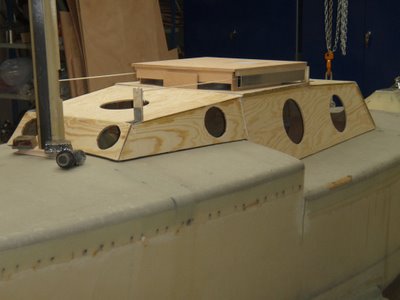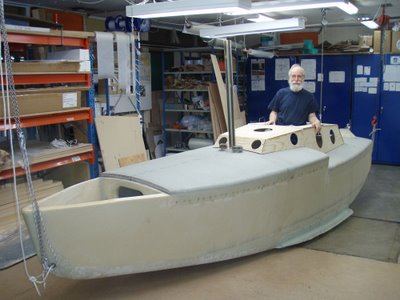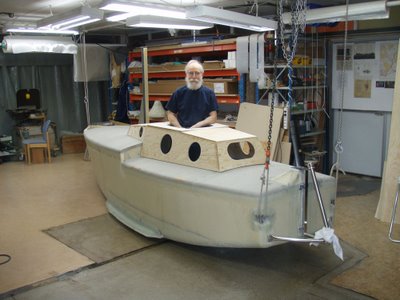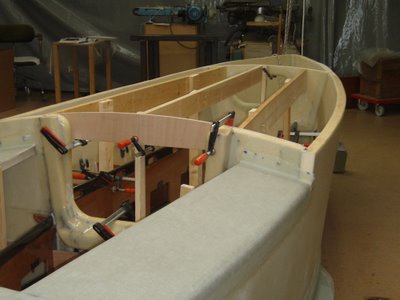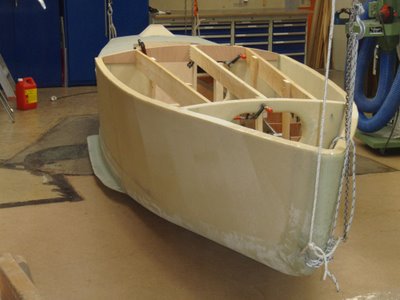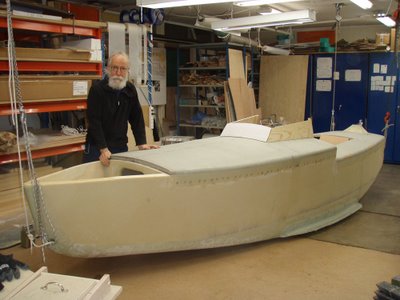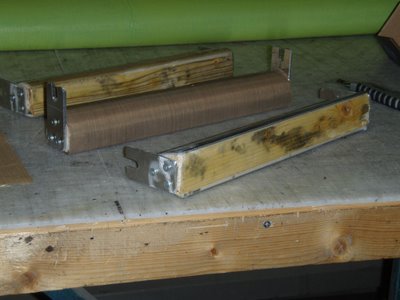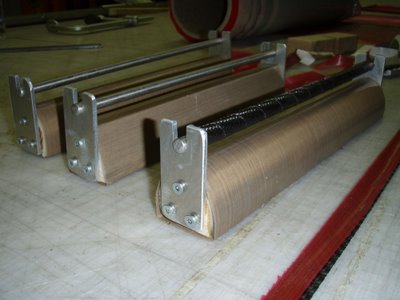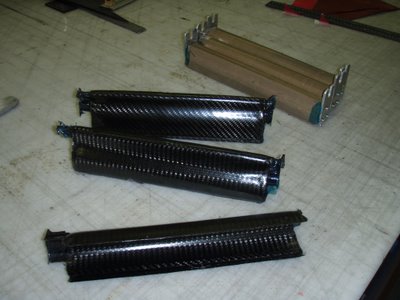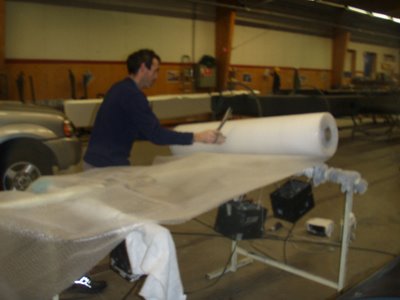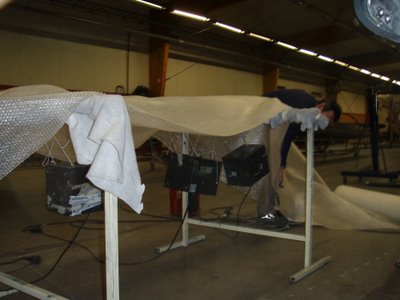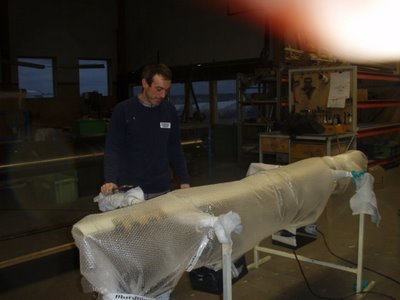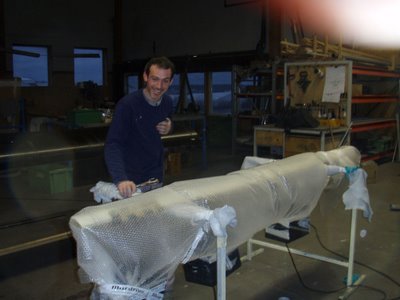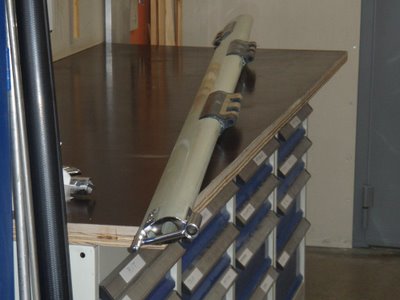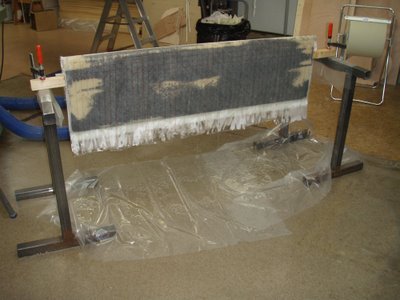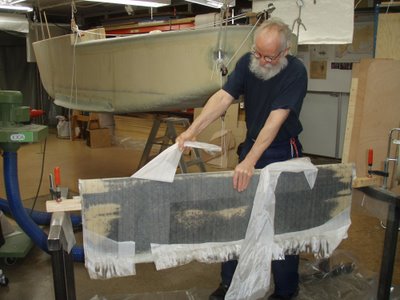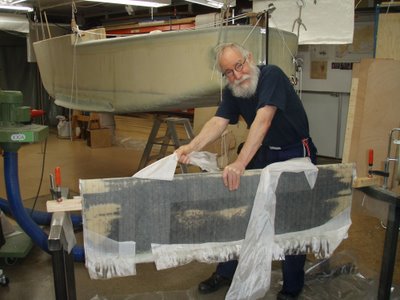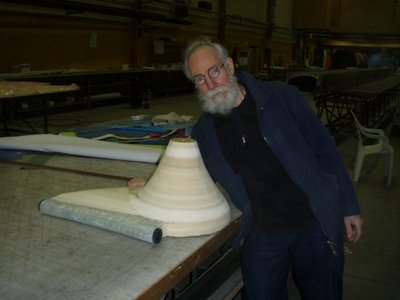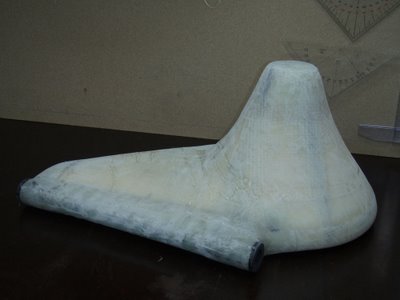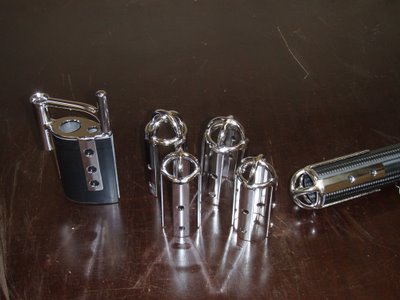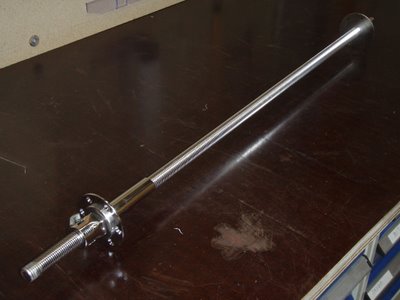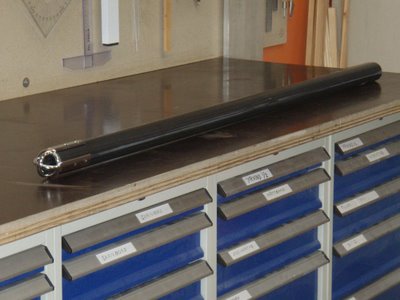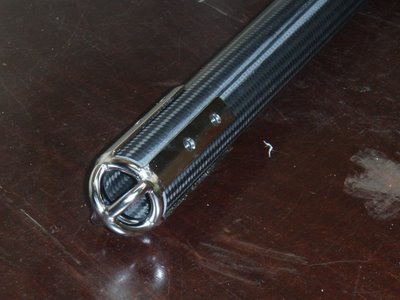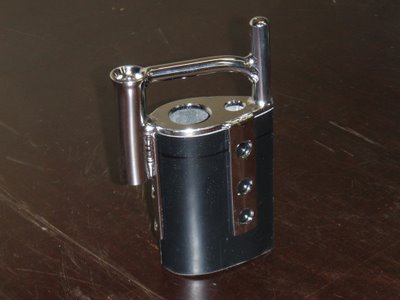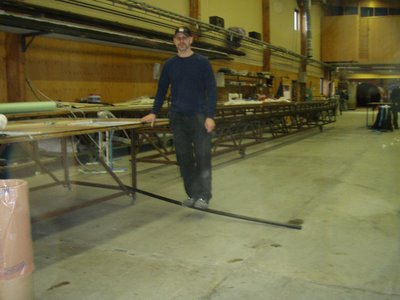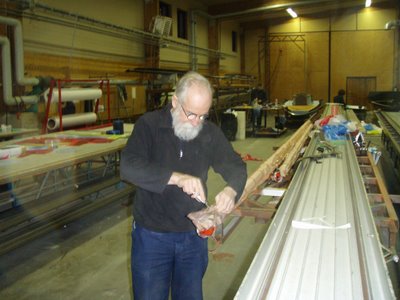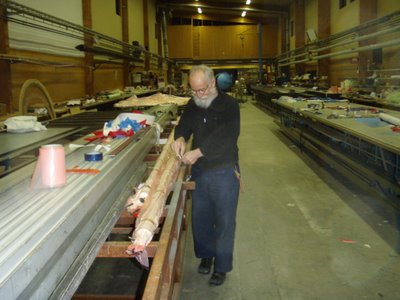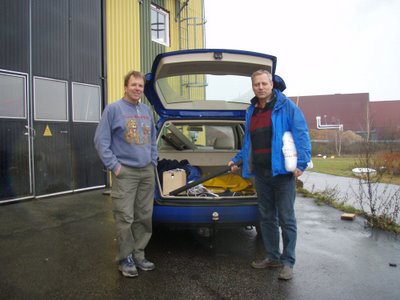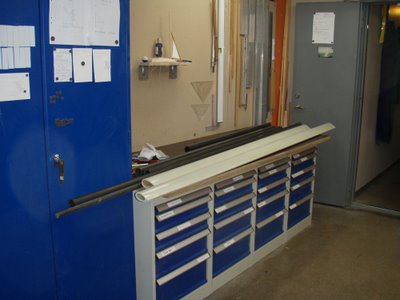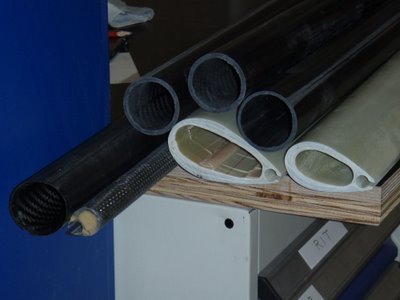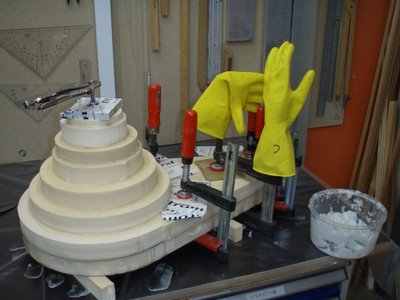I like to have a big rudder to help prevent leeway. I also like to have it far back when surfing down the big waves in the roaring forties and screaming fifties. The when getting inshore I like to reduce my draft to and to be able to pull the boat up the beach. Finally the rudder is going to steer the boat while I sleep. I dont like selfsteering devices as the are complicated. I have good experiences with sheet to tiller system and also to get the boat to steer itself by its own balance. With sheet to tiller system a sheet is connected to the tiller to give feedback. In my design I do not have a tiller instead stearing lines are directly connected to hornlike extensions on the rudder and rudderblade as the below pictures will show. A threaded rod keeps them together. It is however very important that the rod is perpendicular to the surfaces wich must be very flat. This is how I have done it:
I covered a glass plate with teflon.
Click on the pictures to make them bigger
This is the surface of the rudderhead I vanted to be flat
I mix NM-epoxy with filler
I spread the mixture on the rudderhead
I put the rudderhead on the tefloncovered glassplate. I put on a lot of leadweights to squise out the mixture. After the rudderhead I repeated it on the rudderblade.
I made a 300 millimeter long 30 mm diameter drillbit and drilled a whole as perpendicular I could.
I had made a carbonfiber pipe to put inside the oversize hole. I closed the bottom part of the pipe with butylrubber.
I had made a guide by welding a rod to steelplate and turning the plate in a lathe thus assuring a 90 degree angle. I turned the rudderhead 180 degrees. I put in the rod of the guide in the pipe thus making being 90 degrees to the surface. What you see in the picture below is rod coming up inside the carbonpipe. In the space between it and the oversize hole I poor epoxy to fix it.
Everything worked out. Here is the rudder in the upplifted position. Thanks to the possibility to tilt up the rudder 180 degrees it does not stick out behind the boat were it can be damaged in port.
Here is the rudder in the down position.
Here is the tackle I will steer with.

